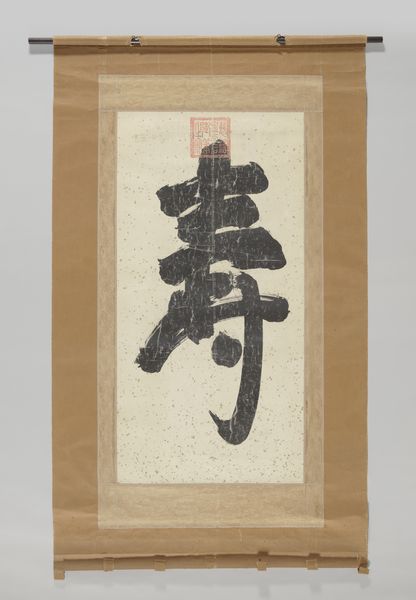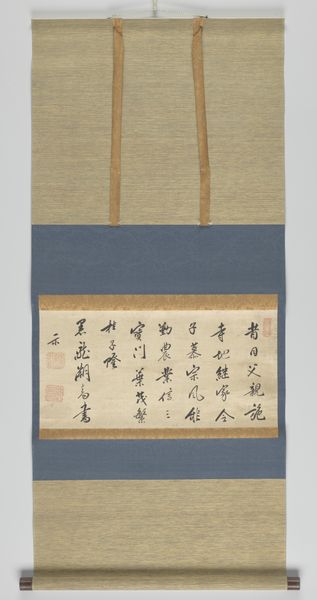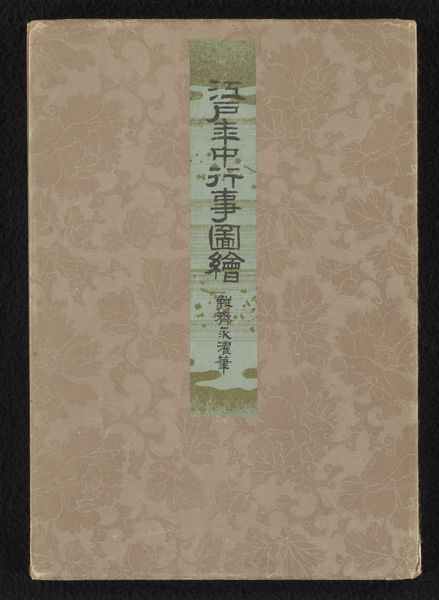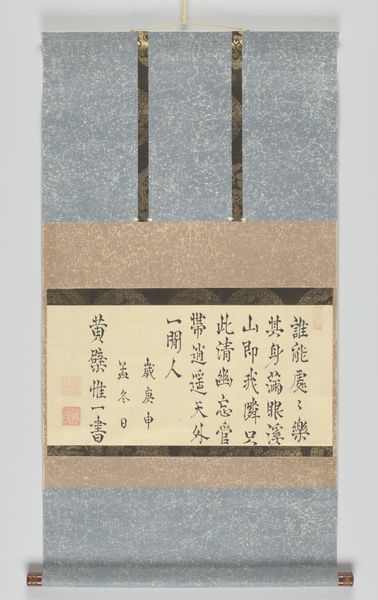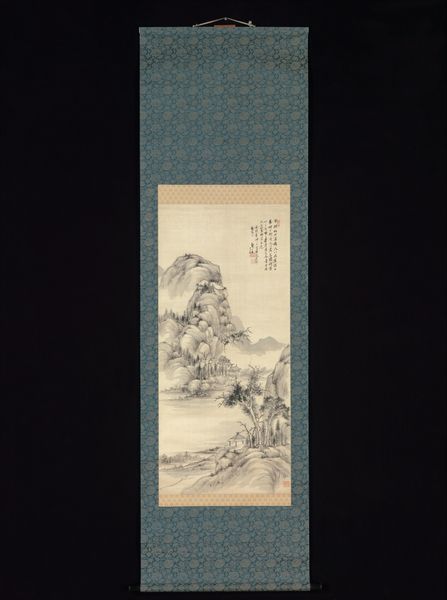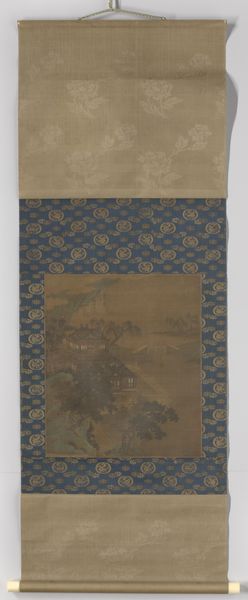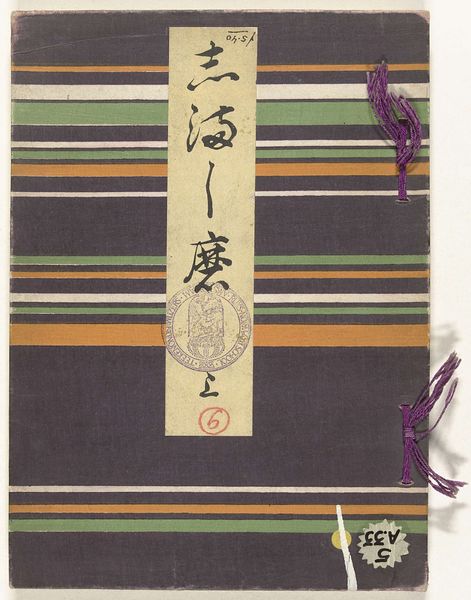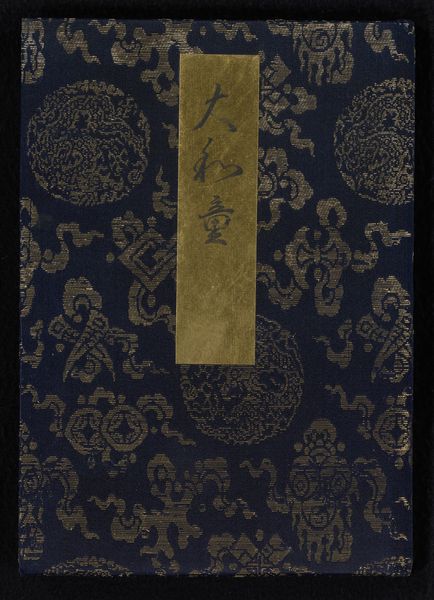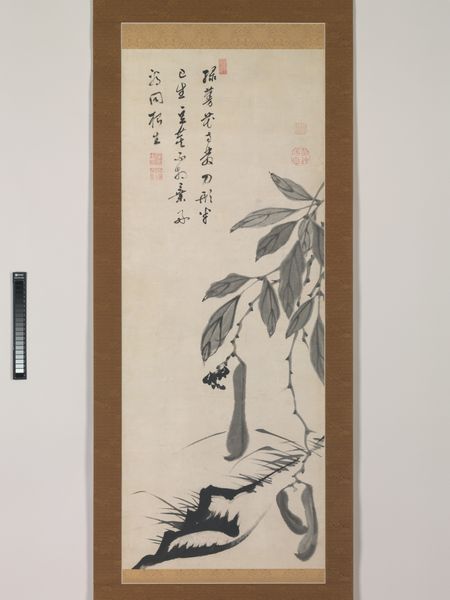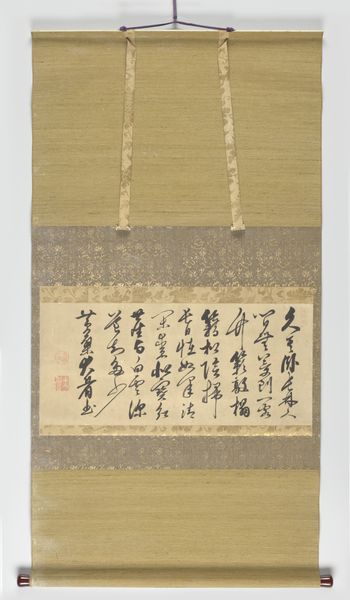
drawing, ink
#
drawing
#
asian-art
#
landscape
#
figuration
#
ink
#
orientalism
#
abstraction
#
line
#
miniature
#
calligraphy
Dimensions: height cm, width cm
Copyright: Rijks Museum: Open Domain
Curator: This artwork, crafted by Satō Zenchū sometime before 1935, is titled "Zen Painting and Calligraphy." It's a drawing using ink. Editor: Immediately, I feel a sense of stillness looking at this, a deep quietness emanating from the dark ground. And then the shimmering gold details pop – it feels meditative, almost like a whispered secret. Curator: It invites a deeper engagement with Zen Buddhism’s emphasis on enlightenment. We can examine how Zenchū situates himself within traditions of East Asian ink painting and consider the cultural contexts informing both the figuration and the accompanying calligraphic text. This is more than decorative; it's an active engagement with philosophy. Editor: Yes, the relationship between image and word is critical here! It’s as though the calligraphy is flowing downwards towards the Buddha figure, as if embodying the flow of insight. There is an ethereal, otherworldly quality that just transcends mere depiction. Curator: The artistic approach speaks to wider issues of identity and cultural appropriation, how Japanese aesthetics were viewed from, and also internalized, a global perspective during the pre-war era. Editor: Appropriation is a strong word. Looking closely, you almost feel like it could have been made yesterday, with that simple flowing line work. Did he use a single brush? Did he think and plan it all first? And how did he bring out such rich and varying tones, from blackest night through all shades of shadow? It feels almost… improvised. Curator: But let's consider how it was collected and displayed. Who did it speak to at the time, and what did it mean in those spaces? What assumptions underpinned its understanding in a Western art market hungry for "Orientalism"? Editor: True! Though I like to think Satō just wanted to let some truth leak onto paper. I want to be an optimistic believer. Anyway, what else could an artwork be for but opening the mind, shifting awareness, changing lives, even by degrees so imperceptible you’d only catch on much later, catching yourself in the middle of being kind to somebody. Curator: Considering Zenchū’s artwork alongside broader sociopolitical factors offers critical perspectives that help us to question preconceived narratives that have too long colored Art History. It provokes crucial dialogues between tradition and modernity. Editor: And it gives your soul a quiet place to rest. A moment to stop thinking and simply *be*.
Comments
No comments
Be the first to comment and join the conversation on the ultimate creative platform.

